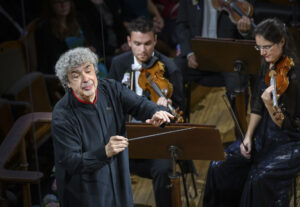
Australia is a country known for its rich cultural heritage, stunning landscapes, and a laid-back lifestyle, but one unexpected part of its identity is its love for pokies. Slot machines, or pokies as they’re fondly referred to Down Under, have become an essential part of Australian culture. With their flashing lights, enticing sounds, and promise of big payouts, pokies have drawn in millions of players over the decades.
But how did these machines, once seen as mere entertainment novelties, grow into an Australian icon? Let’s take a look at their fascinating rise. Pokies first made their way to Australia in the 1950s, but they didn’t take the country by storm overnight. The machines, originally designed as mechanical devices operated by pulling a lever, were a simple form of entertainment.

The early versions were called “poker machines” due to their resemblance to the card game poker, but over time, Aussies affectionately shortened the term to “pokies.” New South Wales was the first state to legalize poker machines, which allowed them to be installed in licensed clubs. This decision was a game-changer, as it paved the way for the machines to become more widely available to the public.
Originally, these pokies were mainly found in pubs and clubs, offering a casual form of gambling that people could enjoy while socializing. This social aspect of pokies played a huge role in their rising popularity—people didn’t just come to gamble; they came to meet with friends, grab a drink, and enjoy a fun night out with pokies as the backdrop. The simplicity of the machines also contributed to their appeal.
Unlike complex card games or traditional casino games like roulette, pokies were easy to understand and play. All it took was inserting a coin and pulling the lever, making the machines accessible to a wide audience. As their popularity grew, clubs and pubs started expanding their selection of pokies, and soon, it became common to see long rows of machines lining the walls, with people eagerly waiting their turn to play.
Throughout the following decades, pokies continued to gain traction, helped in large part by the introduction of newer models and electronic versions. By the 1980s, the Australian government had begun to see the potential financial benefits that pokies could bring, and more states followed New South Wales in legalizing the machines. This shift in regulation opened the floodgates, and pokies began to pop up all over the country, making them a staple of Australian entertainment.
The late 1990s and early 2000s saw the explosion of pokies in Australia, both in terms of their numbers and their cultural significance. By this time, nearly every corner of the country had legal pokies in some form, and the machines had become a dominant feature in pubs, clubs, and casinos. They were no longer just a casual form of entertainment; they had cemented their place in the Australian lifestyle.
One of the reasons for this surge was the modernization of pokies. As technology advanced, so did the pokies themselves. Gone were the days of mechanical levers and coin slots.
The new generation of electronic pokies offered sophisticated graphics, themed designs, and more interactive features that made the games even more exciting. Players could now enjoy multi-line bets, bonus rounds, and digital displays that made each game more immersive than ever before. Themes ranging from classic fruit symbols to popular movies and TV shows added to the allure, making pokies appeal to an even broader audience.
Additionally, pokies became deeply integrated into Australian social venues, particularly in clubs, which were no longer just places to drink and socialize—they became gaming hubs. Clubs across the country, particularly in New South Wales and Queensland, began to rely heavily on pokies as a source of revenue. Many clubs even expanded their operations to create dedicated gaming areas that offered a larger selection of machines and better ambiance, making them prime destinations for gaming enthusiasts.
However, the popularity of Аustralian online pokies wasn’t just driven by technological improvements or clever marketing. The machines became ingrained in the social fabric of Australia because they catered to a fundamental part of the national psyche—Australians love to take risks. Whether it’s through sports, business, or gambling, the thrill of taking a chance is a deeply embedded aspect of Australian culture, and pokies offered an easy and accessible way to tap into that excitement.
At this point, it became clear that pokies were more than just machines; they were a cultural symbol. They represented an intersection between socializing and gaming, where friends could meet up and try their luck together. The prevalence of pokies also sparked debates about their impact on society, but there was no denying that they had become a defining feature of the Australian landscape.
As we move further into the digital age, pokies are once again undergoing a transformation. While traditional pokie machines are still incredibly popular in physical venues, the rise of online gambling has taken pokies to new heights. More and more Australians are turning to online casinos to get their pokies fix, playing from the comfort of their own homes or on the go via smartphones.
Online pokies have taken the appeal of traditional slot machines and amplified it. With a limitless selection of themes, bonus features, and payout structures, the digital version of pokies offers more variety than any land-based venue ever could. This shift has made it easier than ever for players to access their favorite games, leading to even more widespread participation in pokie culture.
The digital transformation of pokies has also sparked new innovations in gameplay. For example, some online pokies now feature progressive jackpots that accumulate across multiple platforms, giving players the chance to win life-changing sums of money. Additionally, the social aspect of pokies has been revived through online communities and live chat features that allow players to interact while playing.
The rise of online pokies has not been without its challenges, however. The accessibility and convenience of online gambling have raised concerns about problem gambling, prompting calls for tighter regulation and the implementation of responsible gambling measures. As pokies continue to evolve, both in physical venues and online, the industry will need to balance innovation with responsibility to ensure that players can enjoy the games safely.
Despite these challenges, pokies remain an iconic part of Australian life. Whether you’re sitting at a machine in a pub with friends or spinning the reels on your smartphone, the thrill of pokies continues to captivate Australians, just as it has for decades. The rise of pokies in Australia is a testament to their enduring appeal and cultural significance.
What started as a simple form of mechanical entertainment has grown into a symbol of social interaction, risk-taking, and national identity. From their humble beginnings in New South Wales to their transformation into high-tech digital games, pokies have become an undeniable part of the Australian experience. As technology continues to shape the future of pokies, their legacy as an Australian icon remains secure.
For many, pokies are more than just a game—they’re a tradition, a pastime, and a shared experience that connects people across the country. Whether in pubs, clubs, or online, pokies will continue to be a beloved part of Australia’s entertainment landscape for years to come..














